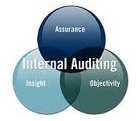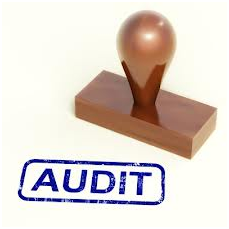Forensic Auditing:
Today’s era has fallen prey to complete digitalization; may it be in the field of accounting or for that matter all the spheres of business conduits. While this computerization has enormous advantages; like any other development it also has its share of certain disadvantages.

These certain disadvantages dwell upon due to our complete reliance on the computerized systems. Emphasizing on the core aspect of accountancy & auditing, here the modern digital environment offers new opportunities for both perpetrators and investigators of fraud. In many ways, it has changed the way the fraud examiners conduct investigations, the methods internal auditors use to plan and complete the work and the approaches the external auditors take to assess risk and perform audits. While some methods, such as online working papers, are merely computerized versions of the traditional tasks, others, such as risk analysis based on neutral networks, are revolutionizing the field. Many auditors and researchers find themselves working amid an ever-changing workplace, with the computer-based methods leading the charge.
In this emerging economic scenario, forensic auditing has geared the demanding ladder. Due to increasing incidents of cyber crimes and frauds this field of auditing has gained utmost importance. This is one of the most upcoming fields for budding practitioners who can emboss this area of auditing as their forte.
The difficulty being faced by the auditors while conducting their verifications, investigations & audits is prima facie the fact that there is lack of applicability of a single/uniform method like digital analysis, electronic evidence collection, data mining and computer forensics for the same. Indeed, computer-based fraud detection involves a plethora of different technologies, methodologies and goals. Some techniques require a strong background in computer science or statistics, while others require understanding of data mining techniques and query languages.
The spotlight in Forensic Auditing lies on the critical evaluation so as to detect the various types of computer frauds. The auditors can make use of an assortment of fraud detection techniques ranging from data mining, computer forensics, external information sources, ratio analysis for financial statement frauds, etc.
Internal Auditing:

Internal Auditing on the other hand differs from the former form of auditing considerably. Internal auditing encompasses the examination, monitoring and analysis of activities related to a company's operation, including its business structure, employee behavior and information systems. An internal audit is designed to review what a company is doing in order to identify potential threats to the organization's health and profitability, and to make suggestions for mitigating the risk associated with those threats in order to minimize costs.
Regulations, such as the Sarbanes-Oxley Act of 2002, have increased corporate requirements for performing internal audits. They are important components of a company's risk management, as they help companies identify issues before they become substantial problems. They also help identify risky behaviour by individual employees and threats posed by outside parties, such as attempts to steal intellectual property.
Internal Auditing is an independent appraisal function established within an organization to examine and evaluate its activities as a service to the organization. The objective of internal auditing is to assist management and the board in the effective discharge of their duties. It is the Board's responsibility to set policies, and the auditor's role to independently and objectively analyze, review, and evaluate existing procedures and activities, to report on conditions, and to recommend changes for consideration. To this end, internal auditing furnishes analyses, appraisals, recommendations, counsel, and information concerning the activities reviewed.
Forensic Auditing v/s Internal Auditing:

The most notable differences between internal audits and forensic audit are the objectives of the tasks performed. Certain similarities may be present, but the differences create a wide gap which justifies the need for specialization in forensic accounting & fraud detection.
Forensic audit mainly surrounds the prima facie theme of auditing critically to detect any kind of frauds or errors in the financial statements. On the other hand internal audit doesn’t involve critical examination; it simply involves thorough auditing of each area of a company as an aid to the management.
Further the users of internal audit and forensic examination reports are the key differences between the objectives these two forms of auditing.
The internal audit report will aid management as a tool for:
· Determining the efficiency of its marketing strategies.
· Evaluating the soundness of its internal control policies to safeguard the company’s assets.
· Reviewing compliance with company policies as well as governmental rules and regulations.
Forensic accounting on the other hand is more concerned in:
· Establishing the existence of fraud.
· Determining the extent of damage or losses involved as a result of the fraud or crime.
· The gathering of sufficient evidence for use by the courts of law to come up with a fair and judicial ruling for indemnification and/or prosecution.
In spite of numerous differences, there are similarities in the ways and methods of carrying out duties and responsibilities as a means to attain the objectives:
(1) The financial accountant also pursues the indications of fraud, prepares a report on the extent verified, and makes recommendations for further investigations. However, these functions are performed as a result of the financial audit review and not as the auditor’s main goal.
(2) Financial audit examination like forensic accounting includes verification and inspection of supporting documents to ascertain accuracy of claims against the company.
(3) Calculating valuations of assets to ensure that the company’s net worth are fairly valued, using methods prescribed by fundamental and GAAP rules.
(4) Reviewing methods of allowing credit, the effectiveness of enforcing credit requirements, the quality of creditors, and efficiency of collection efforts.
(5) Checking on compliance with statutory and regulatory requirements by governing bodies. In financial audit, the aim is to avoid penalties and sanctions; in forensic accounting, the objective is to determine the possible existence of third party claims or willful desire to evade the obligations.
(6) Confirming the genuineness and accuracy of receivable balances by sending out confirmation letters. Financial statement audit and forensic audit of banking institutions both include confirmation of balance and genuineness of accounts.
These are only a few of the similarities. Some may arise based on the need of the users, where the basic aim of the financial audit is to aid management, while forensic accounting generally seeks evidence to support litigations.
To summarize the key differences between internal audits vs. forensic accounting are the goals and objectives. In an internal audit, the main concern is compliance--to ensure that financial reports are based on prescribed rules, principles, and policies. The financial auditor's scope of responsibility is mainly based on what is beneficial and in the interest of the company
In forensic accounting, the focus of concentration is on crimes and anomalies as well as their detection and unravelling. This includes any indications of fraud presented by errors and deviations, since the main objective is to gather evidence for litigation purposes. The forensic accountant’s scope of responsibility is broader because it includes public interests.








 CAclubindia
CAclubindia
